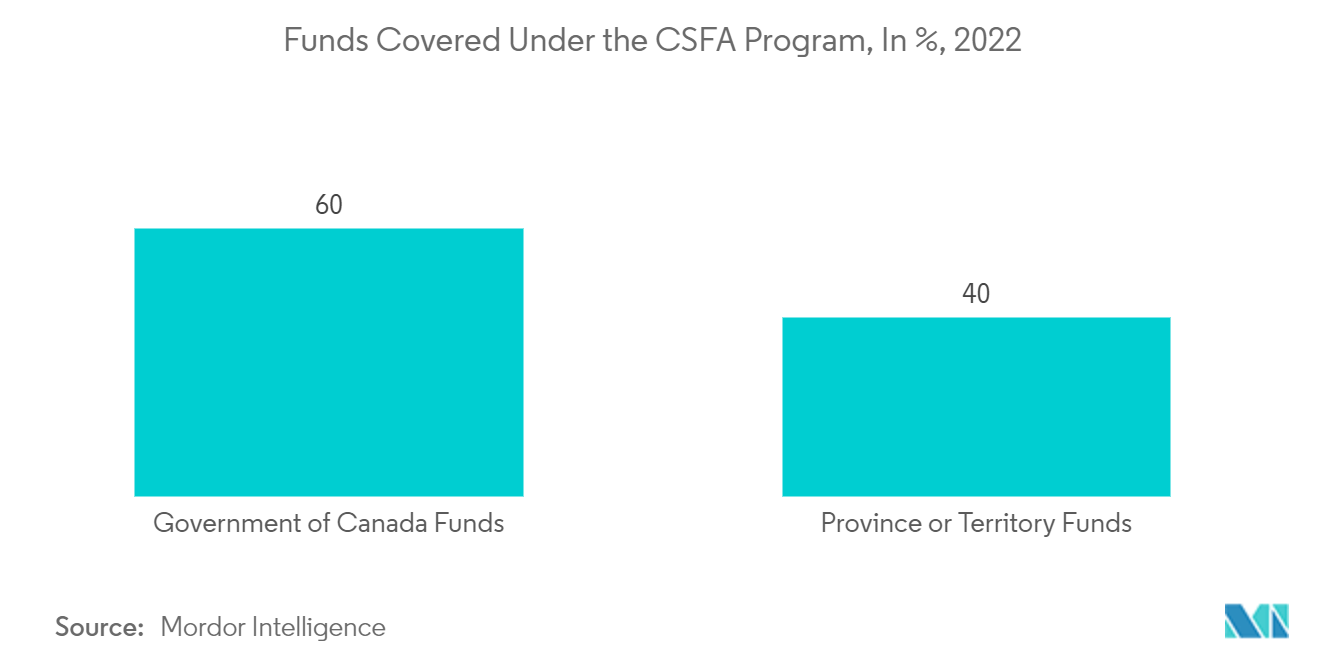Market Trends of Canada Student Loans Industry
Increased Cost of Tuition Fees is Driving the Market
Canada is a popular study destination for international students, offering prestigious universities, vivid student cities, and a well-organized lifestyle. Tuition fees in Canada for international students in 2023 reflect the many opportunities the country has to offer: there are both expensive and cheap universities in Canada. Tuition fees at Canadian universities are a bit high but generally lower as compared to countries like the United Kingdom, US, or Australia. University fees may vary yearly.
Full-time students enrolled in undergraduate programs paid USD 6,693 in tuition fees in the 2021-2022 academic year. The average fees were up 1.7% from the previous year. The average cost of graduate programs rose by 1.5% to USD 7,472. The fees did not change in Ontario or Newfoundland and Labrador but rose in other provinces and territories. Increases in undergraduate tuition fees ranged from 1.1% in Prince Edward Island to Alberta’s 7.5%. The large increase in Alberta was because of the restructuring of tuition fees in the whole province. This is expected to lead to the growth of the student loan market in Canada.

Canada Student Financial Assistance Program is Expected to Boost Growth of the Market
The Government of Canada recognizes the importance of student financial assistance to help post-secondary students achieve their educational goals and, ultimately, succeed as contributing members of a productive workforce. Through the CSFA Program, the Government of Canada funds about 60% of a full-time student’s financial need. The province or territory covers the remaining 40%. In this way, the CSFA Program works collaboratively with provincial and territorial governments to deliver student financial assistance to eligible students. Quebec, Nunavut, and the Northwest Territories do not participate in the CSFA Program but receive annual alternative payments in support of their student financial assistance programs. Applicants in the remaining 10 jurisdictions are assessed for federal and provincial grants and loans through a single application process.
In the 2021 to 2022 academic year, over 763,000 post-secondary students received financial assistance from the CSFA Program in the form of grants, loans, or in-study interest subsidies. The CSFA Program provided USD 3.3 billion in non-repayable Canada Student Grants (CSGs) to approximately 544,000 students and USD 2.9 billion in Canada Student Loans (CSLs) to 558,000 students. In addition, the 3 non-participating jurisdictions will receive USD 999.2 million in alternative payments based on the CSFA Program’s expenses and revenues for the 2021 to 2022 academic year.


